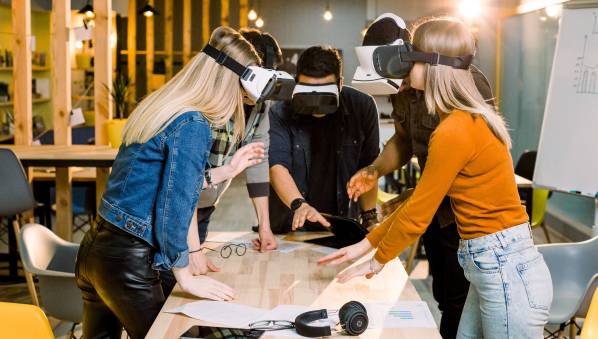The Internet of Things (IoT), virtual reality (VR) and augmented reality (AR), while serving a wide variety of different purposes, have come together in recent years to push technological advancements even further than they’ve been before. Separately, these three concepts can be defined as:
- The Internet of Things is comprised of connected electronic devices designed to make life easier for consumers across a wide technological landscape. Things like smart devices in the home that communicate with one another, the cloud and cloud storage that can be accessed by multiple devices, as well as smart home digital voice assistants, are all examples of these interconnected devices.
- Virtual reality is a digital world with simulated visual, auditory, and tactile content that departs completely from the real world in which you’re standing. Many VR applications require the use of VR headsets and similar tools, such as haptic gloves, for full immersion.
- Augmented reality manipulates a real-world environment, combining it with digital tools, graphics, and other applications where digital meets reality. Examples include real estate walkthroughs, and popular AR-based games like Pokemon GO; AR comes in a variety of forms including phone apps.
But how can these tools come together to benefit IoT applications, specifically when it comes to taking advantage of the strengths of VR and AR? Not only can small businesses benefit, but even individual consumers can find value in the marriage of these two applications in myriad ways, some of which they may already be familiar with without even realizing it.
